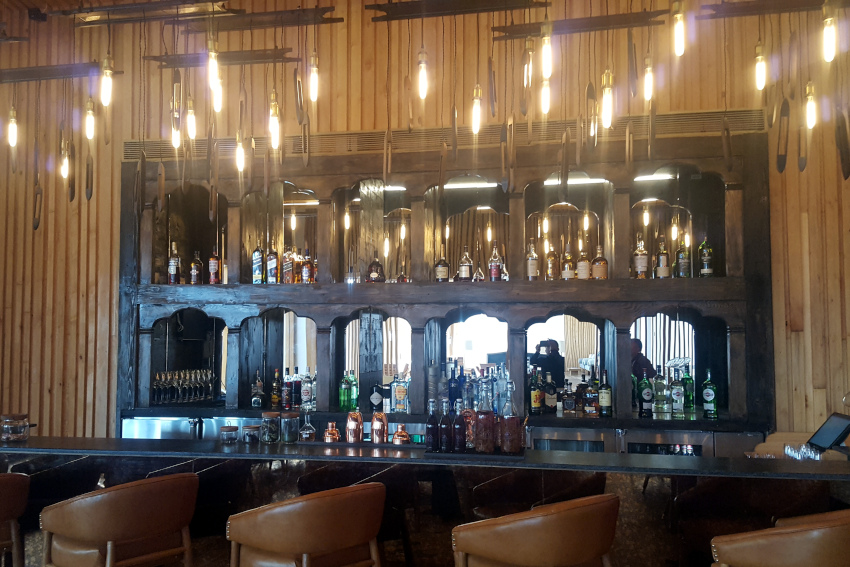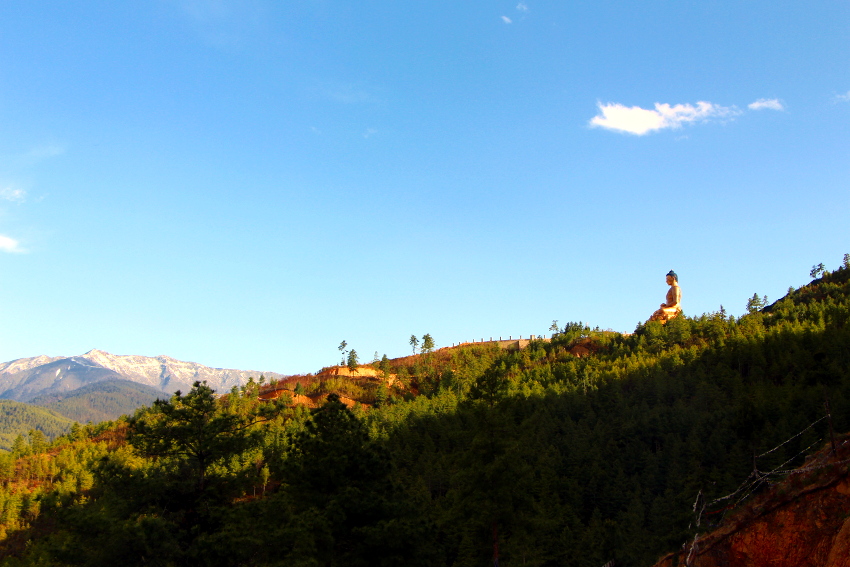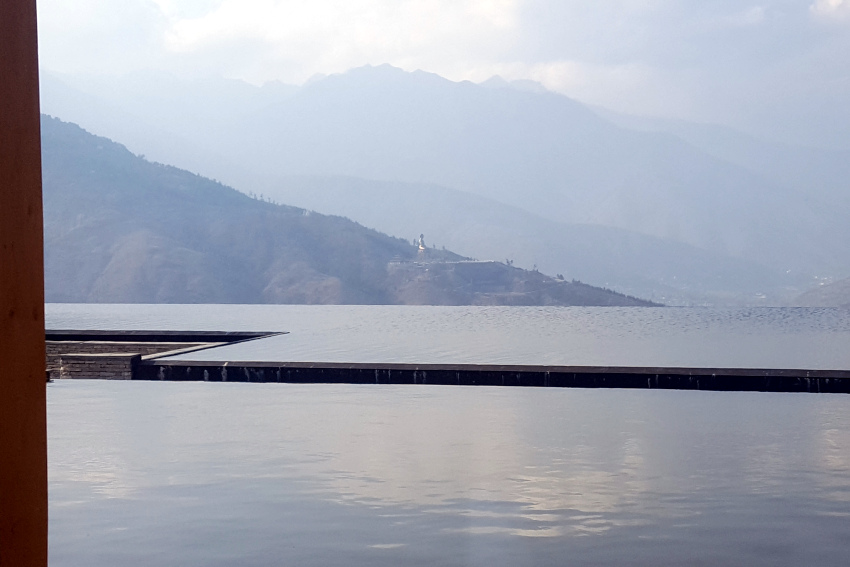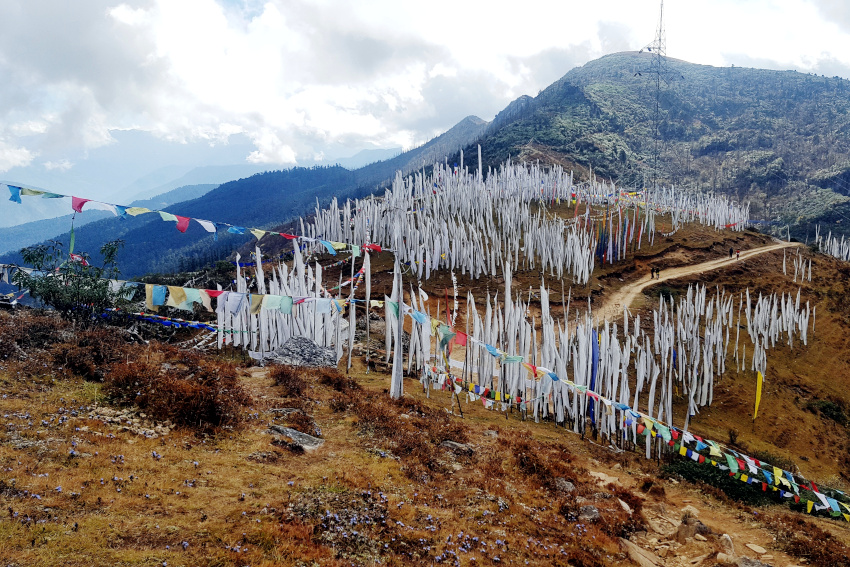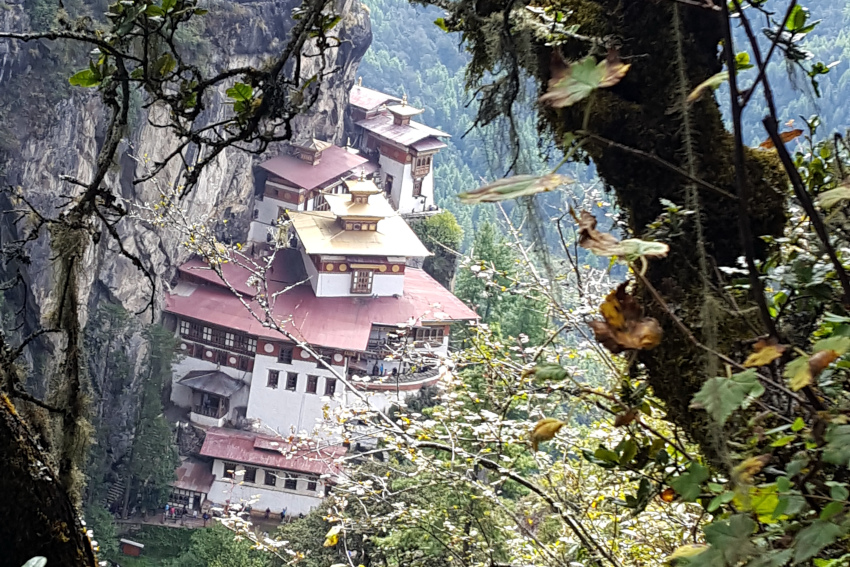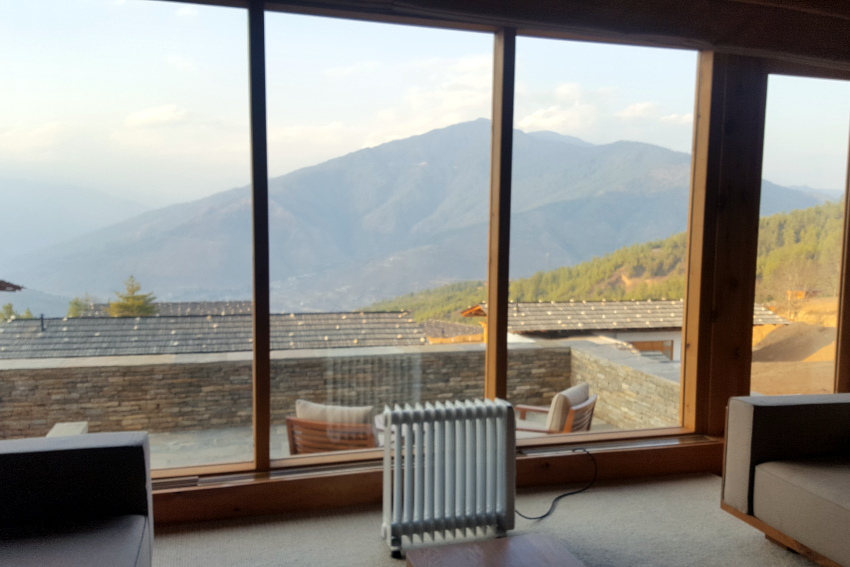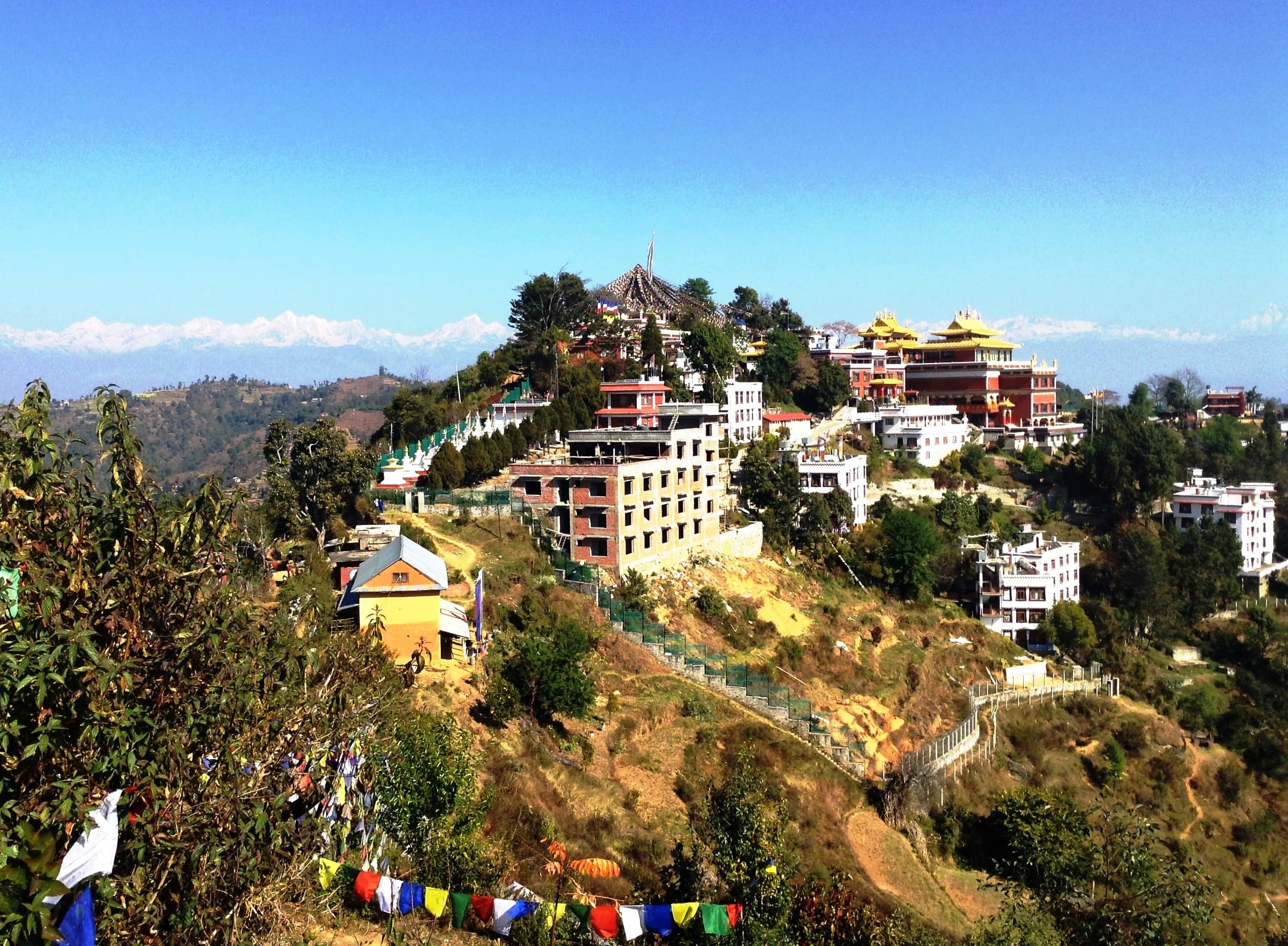
The seasons for travelling to both these countries are similar as their season patterns are of similar type, so they also have the same trekking seasons. So you can combine your Bhutan and Nepal tour together in just a span of 16 days, as each of the countries unfolds unique experiences.
Trip Highlights
- Sightseeing in Thimphu
- Trashichho dzong
- Taktsang Monastery (The Tiger’s Nest)
- Handicrafts emporium
- Punakha Dzong
- Drugyel Dzong victory fortress
SHORT ITINERARY
Day 01 :
Bangkok/Delhi – Kathmandu
Day 02 :
Kathmandu/Patan
Day 03 :
Kathmandu – Pokhara
Day 04 :
Pokhara hikes
Day 05 :
Pokhara – Kathmandu – Nagarkot
Day 06 :
Nagarkot – Kathmandu
Day 07 :
Kathmandu – Paro – Thimphu
Day 08 :
Thimphu, Tango hike
Day 09 :
Thimphu – Punakha (2 ½ hrs drive)
Day 10 :
Punakha – Bumthang (7 ½ hrs drive)
Day 11 :
Bumthang sightseeing
Day 12 :
Bumthang – Phobjikha (5 hrs drive)
Day 13 :
Phobjikha – Thimphu (4 ½ hrs drive)
Day 14 :
Thimphu festival – Paro
Day 15 :
Paro Tiger’s Nest hike
Day 11 :
Paro – Delhi. Transfer to the international airport for your final departure.
Day 01: Bangkok/Delhi – Kathmandu
Depart Bangkok or Delhi, and arrive Kathmandu before lunch. After arriving at Kathmandu International Airport you will be received and picked up by our representative in Nepal and then drive to hotel. After check-in and refreshed, start sightseeing in Kathmandu.
Boudanath Stupa: Boudanath Stupa (or Buddnath Stupa) is the largest stupa in Nepal. It is also the center of Tibetan culture in Kathmandu and rich in Buddhist symbolism and sacred importance. The stupa is located in the town of Bouddha on the eastern outskirts of Kathmandu.
The Stupa looms 36 meters high and presents one of the most fascinating specimens of stupa design with hundreds of prayer wheels and 108 small images of Buddha all around. Just like the Swyambhunath, the stupa here is too has four sides with the watchful eyes of Lord Buddha. The main entrance to the upper platform of Buddnath Stupa is on the north side. Here Amoghasiddhi, progenitor of the future Buddha, presides. Below Amoghasiddhi is the Buddha Maitreya, the future Buddha. Surrounding Buddhanath Stupa are streets and narrow alleys lined with colorful homes, Tibetan Buddhist monasteries that can be visited, for example: Shechen Monastery (red), Ka-Nying Monastery (white), and street vendors.
Have some coffee/tea in one of the restaurant’s terraces and contemplate the stupa and feel the unique atmosphere of the place.
Pashupatinath Temple: The temple of Pashupatinath is Nepal’s most sacred Hindushrine and one of the subcontinent’s great Shiva sites.Pashupatinath, beside the sacred Bagmati River, is the holiest place in Nepal. Pashupatinath’s supreme holiness has two major parts. One is that Shiva linga enshrined in the main temple and its location on the banks of Bagmati. Hindu devotees plunge into the holy Bagmati River daily and recite the verse from the ancient Vedas. It is believed that plunging or bathing into the holy river releases from the cycle of rebirth. It is believed that sex organ of Shiva fell to Nepal. The main temple of Pashpatinath (meaning Lord of Beasts believed to be divine protector of Nepal) contains a lingam of Pashupati which is three and a half feet high and has four faces sculptured on it.
Pashupatinath is Nepal’s most renowned Hindu cremation site. In Hindu culture, after the person is dead, his/her dead body is wrapped in cloth and placed on bamboo litter and bodies are delivered by barefoot pallbearers accompanied by the male relatives. The eldest son from the family performs the cremation ceremony and the dead body is burnt. A few hours later the ashes are collected and swept in the river which will join the Holy Ganges eventually. Back to Hotel and overnight.
Day 02: Kathmandu/Patan
Good morning! Breakfast at hotel and ready to start the day! Private car transportation to our first sightseeing:
Swyambunath Stupa: Perched atop a forested hill on the western edge of the Kathmandu Valley, Swyambunath Stupa is Kathmandu’s most important Buddhist shrine. The sleepy, all-seeing Buddha’s eyes that stare out from the top of this hemispherical shrine have become the quintessential symbol of Nepal. The pilgrim’s route to the Swyambunath Stupa is a steep stone staircase of more than 300 steps, often claimed as 365. Leading up to the Swayambunath gate are walls into which are set dozens of copper prayer wheels, inside of which are thousands of Tibetan Buddhist prayers.
Buddhists gain a better standing in their next life by saying as many prayers or mantras as possible, and it is believed that when each prayer wheel is spun, all the prayers inside are recited and sent heavenward. Swayambunath is also known as the Monkey Temple, and as you start up the hill, you will likely begin to see the monkeys that lend the stupa this alternate name. After ended our visit here we will be transfer to our next tour point.
Patan: Patan is also known as the paradise of fine arts. The city lies only 5 km from Kathmandu. It is a city of Buddhist monuments, Hindu temples and fine wood carvings. Lalitpur is the other name of this city which means “the city of beauty”. Like the Durbar Square in Bhaktapur also the Patan Durbar Square is a World Heritage Site. It has many famous sites and unique architectures. Krishna Mandi, Bhimsen temple, Hiranya Varna Mahabhihar are just a few among the temples offering you an extasy of paintings, wood and metal carvings.
One of the most interesting temples in Patan is Mahabouddha Temple. The temple is dedicated to Gautam Buddha. The temple was built by Pandit Abhaya Raj, a Buddhist architect, and an even more interesting thing about the temple is that every single brick has Buddha engraved in it. There are nearly one thousand bricks of Buddha in the temple! The Golden Temple in Patan is a pagoda which has many images of Lord Buddha as well as large prayer wheels. The pagoda is also known as Kwa Bahal or Suwarna Mahavihar. Have lunch in one of the restaurants around the square and keep enjoying the view. Transport to Kathmandu Durbar Square where you can enjoy the walk between the temples.
Kathmandu Durbar Square: This is a durbar of history and arts. One can see artistic monuments, find the house of the living goddess Kumari, learn about the Kal-Bhairam temple, red monkey god, and hundreds of erotic wood carvings. The Kastmandap rest house located within the durbar square is said to have been built from a single tree. It is because of this house that Kathmandu valley (Valley of the Gods) got its name.
Get a walk around Thamel and enjoy the touristic area, many options to have dinner, coffee, bakeries, souvenirs and to do some shopping of things you may need during your trip. Back to Hotel and overnight.
Day 03: Kathmandu – Pokhara
Our tour in the beautiful Lhasa City comes to an end today. There is nothing else to do but stroll around the Lhasa streets, shop for souvenirs or just rest in our hotel room. Our guide and driver will take us to the Lhasa airport for our onward journey to Nepal. Our driver will pick you up from the international airport and then drop you to Domestic airport in Kathmandu for your flight to Pokhara.
In the afternoon, you will catch your flight to Pokhara. Upon arrival in Pokhara, check in at your hotel. Have a short hike in and around if time permits, and then have a rest this evening in beautiful Pokhara valley.
Day 04: Pokhara hikes
Have breakfast at the hotel. After the breakfast, we start hiking from Lakeside to Naudanda. It takes around 4/5 hours to reach Naudanda passing Sarangkot. After we reach Naudanda, we take private coach from there to Lakeside. It is a half an hour drive from Naudanda to Lakeside. Enjoy your last evening in Pokhara. Enjoy dinner in the lakeside area. Overnight in hotel.
Day 05: Pokhara – Kathmandu – Nagarkot
Early wake up (around 5:00am) to go to Sarangkot, is a short driving trip up to the hill, the earlier you arrived the better spot you will get! The energy that it’s created surrounded by the mountains combined with the wait for the first sunlight that crosses the natural Rockwall, worth every minute without sleep. Have some tea and enjoy the scenery. Have breakfast at the hotel, check-out and be transfer to the airport for a half an hour flight back to Kathmandu.
After your arrival to Kathmandu private car transportation to Nagarkot, approximately 45 minutes road trip. Nagarkot (2.200m.), located at a hilltop around 35 kilometers east of Kathmandu, is a very scenic spot. Nagarkot offers spectacular sunset and sunrise views on the mighty Himalayas when the weather is clear. Nagarkot is famous for being one of the best places to see Mount Everest and lots of other snow covered Himalaya peaks like Manaslu, Ganesh Himal and Gauri Shankar. You will be transfer to your hotel, find a spot to see the sunset, have a nice rest after dinner and be ready for next day adventure!
Day 06: Nagarkot – Kathmandu
Wake up early in the morning to see the stunning view of the sunrise and the panorama view of the Mountain ranges. Later have breakfast at the hotel.
After the breakfast, we start our hike to the Changu Narayan Temple. It is around 3 hours hike to Changu-Narayan Temple. The temple of Changu Narayan was originally built in the 4thcentury during the Lichhavi Dynasty. It was rebuilt in 1702 after a major fire occurred. The Changu Narayan temple is a double-roofed temple dedicated to Lord Vishnu in his incarnation as Narayan. The temple is decorated with ten incarnations of the Narayan. Stone lions guard all the four doors of the temple.Later drive back to Kathmandu.
Day 07: Kathmandu – Paro – Thimphu
Our guide and driver will welcome you to the Kingdom of Bhutan at Paro international airport.
You will have a wonderful view of the mountains of Nepal and Bhutan while you fly into Bhutan. Upon arrival at the Paro airport, you will be received by the representative from Bhutan Travel Adventures and then drive to Thimphu for an hour. After checking in at the hotel, you could have lunch.
After lunch you will visit the school of Arts and Crafts where you can see students learning 13 types of arts and crafts of Bhutan. Visit the Folk Heritage museum which is a replica of a medieval farm-house, and we still have this kind of house in some of our rural parts. In the evening you can stroll around the Thimphu city to see the life of people in Bhutan’s capital. Overnight at the hotel in Thimphu.
Day 08: Thimphu, Tango hike
After breakfast, drive for half an hour (12 km) towards north of Thimphu valley and then you will have to hike for almost 2 hours to and fro. Tango Goemba (monastery): Lama Gyalwa Lhanampa founded the monastery in the 12th century. The present building was built in the 15th century by the Divine Mad Man “Drukpa Kuenly”. In 1616 Shabdrung Nawang Namgyel visited Tango Goemba and meditated in a cave nearby. Today Tango is the residence of an important young Trulku (reincarnate lama) who is recognized as the 17th reincarnation of highly respected forth Desi, Gyalse Tenzin Rabgye, whose previous reincarnation passed away in 1830. Also at present the monastery serves as the prestigious Buddhist University for the monks of our state religion. You will also see some birds around this vicinity. Drive back and have lunch in the city. In the afternoon, you can drive to Buddha point to see the largest statues of Sykhamuni Buddha (present lord Buddha) in the world. The rapidly growing and expanding Thimphu city is best viewed from the Buddha point. Later you will visit the 3rd King’s memorial Stupa. And overnight at the same hotel in the city.
Day 09: Thimphu – Punakha (2 ½ hrs drive)
After breakfast drive to Punakha for 2 ½ hours with short stop at Dochula pass (3100 meters). If the weather is clear, you could have a superb view of the Bhutan’s Himalayas from the pass. Upon arrival in Punakha, check into the hotel first.
And have lunch in Punakha town and visit beautiful Punakha Dzong built in 1637 by Shabdrung Ngawang Namgyal. Based on the prophecy of Guru Padmasambava the dzong is situated between two famous rivers, Pho Chu (Male River) and Mo Chu (Female River). Punakha was also the capital of Bhutan until 1955. Later in the evening you can hike to Khamsum Yuelley Namgyel Chorten. The hike is wonderful posing its fascinating view of Mochu River and valley. Nighthalt stay at the hotel in Punakha.
Day 10: Punakha – Bumthang (7 ½ hrs drive)
The drive will take around 7 ½ hours. You will have lunch at Chendibji Restaurant or in Trongsa. You can stop to see and take picture of Chendipji Stupa, built in Syambunath style of Nepal. Drive to Bumthang with short stop at Chummey Yathra shop, the place where they weave the woolen clothes out of sheep wool. Overnight stay in Bumthang.
Day 11: Bumthang sightseeing
The valley is one of the most beautiful valleys in the kingdom. It is also the religious heartland where many saints and masters meditated leaving their imprints as sacred places of worship and pilgrimage Tales of Padmasambhava dominate these holy shrines. In the morning visit, Jampa Lhakhang which was built by Tibetan King Songtshen Gempo in the 7th century to pin down the left Knee of the ogress. And then visit Kurji monastery were body imprints of Guru Rimpoche from the 8th century remains preserved upon a rock. Then short hike to Tamzhing Monastery. If the weather is clear, you will enjoy the view of green valley, dotted with hundreds temples, thousand flags and beautiful chamkhar river flow through the valley. The valley is also called mini Switzerland of Bhutan. After Lunch, drive to visit Tang Member Tsho (Burning Lake), Saint Pemalingpa had discovered several hidden treasure from the Lake. Night halt at the same hotel in Bumthang.
Day 12: Bumthang – Phobjikha (5 hrs drive)
After your breakfast you will drive to Phobjikha valley. This is one of the most beautiful valleys to stay in. So the rarest Black – Necked cranes comes here as their winter home. If the cranes are not here at this time of the year, you will enjoy the scenic beauty and peaceful living of this valley. You can also visit the Gangtey monastery, built in the early 15th Century and this monastery practices a Nyingmapa sect of Buddhism which is one of the four sects of Mahayana Buddhism. Overnight in Phobjikha valley.
Day 13: Phobjikha – Thimphu (4 ½ hrs drive)
Drive back to Thimphu with your lunch en-route. Overnight halt stay at the hotel in Thimphu.
Day 14: Thimphu festival – Paro
In the morning you will attend the biggest festival of Bhutan with the local folks. Have lunch and then drive to Paro.
Upon arrival in Paro, visit the Kyichu Lhakahang which was founded by Tibetan King Songtshen Gymepo in the 7th century. This is one of the oldest monasteries founded with the introduction of Buddhism to Bhutan. After that visit Drugyel dzong which is a ruin fortress at present, and it was built in 1649 by Shabdrung Nawang Namgyel. The dzong was actually built to commemorate the winning victory over the Tibetans in 1644. Night halt at the hotel in Paro.
Day 15: Paro Tiger’s Nest hike
The hike will take about 4 hours for a round trip with lunch stop. It’s an uphill hike.Taktsang monastery is perched on the face of a cliff 800 Mts, above the Paro valley. It is a memorable spiritual journey. It was here that the great Tantric master, Guru Padmasambhava flew in from Tibet on the back of a flying tigress to propagate his teachings in Bhutan. Lunch at the cafeteria and then walk back all downhill. Enjoy your last night in Bhutan. Overnight at the hotel in Paro.
Day 16: Paro – Delhi
Our guide and driver will drop you at the airport and bid you goodbye for your flight departure to Bangkok.
Tashi Delek and have a pleasant flight towards home
The minimum daily package covers the following services:
- Peak Season Cost: March, April, May, September, October & November
Staring Cost: USD 2,760 per person. - Regular Season Cost: June, July, August, December, January & February
Staring Cost: USD 2,430 per person
Note: Single Room Supplement Cost is, USD 30 per night for 3 Star hotels, USD 65 per night for 4 Star Hotels and around USD 300 for 5 Star Hotels.
The Flight cost for Singapore – Paro – Singapore is, USD 960 per person.
These rates are applicable per tourist per night halt in Bhutan.
Ans; The Daily Cost for such regular season is USD 210 per person per night only. And we provide minimum very good 3 Star Hotels and above. The cost includes; Government’s Sustainable Development Fee $65 per night per person and taxes, 3 star hotels, 3 meals a day, good guide, private car & driver and entry fees.
2. Do you apply our Bhutan Visa, and what documents are required for the Visa? And what is the Visa fee?
Ans; Certainly, we will apply/issue your Bhutan Visa upon receiving the full payment from you. And we just need your clear passport copy only for the Visa. The Bhutan Visa Fee is US $40 per entry only.
3. Do you book our flight? If so, which cities outside Bhutan we can fly to and from Paro and which is the most convenient as for flying to/from Bhutan?
Ans; We have flights to and from cities like Bangkok, Kathmandu, Delhi, Kolkata, Dhaka, Singapore, Guwahati and Bagdogra. Yet, the most convenient flights is via Bangkok as we have several flights in a day.
4. What is the procedure for this trek/trip booking?
Ans; You will have book this trek at least two months ahead with your confirmed flight booking. And then must deposit US $400 an Advance Payment with full airfare for your flight to/from Paro, Bhutan only.
5. Will the trip be an independent for us only?
Ans; Yes, you will have an independent trip.


